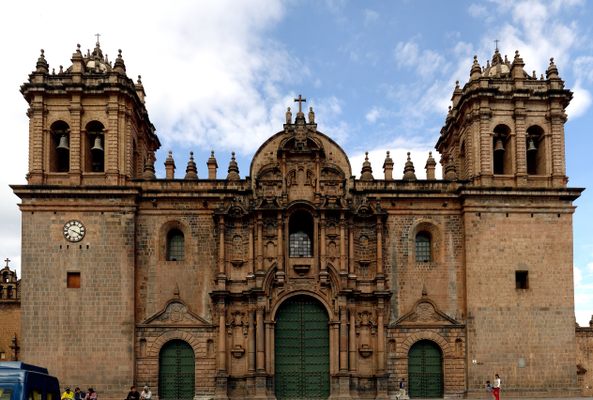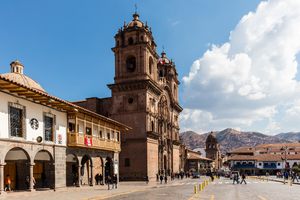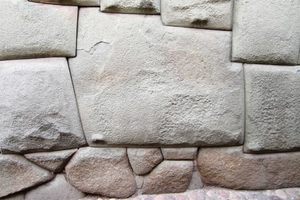About
Cusco Cathedral is located in the heart of southeastern Peru within the city of Cusco’s Plaza de Armas. Designed in the Gothic-Renaissance style with Baroque touches, floor plans for the magnificent church were built in the shape of a Latin cross.
While construction began in 1559, the edifice wasn’t actually completed until 1654. Also known as the Cathedral Basilica of the Assumption of the Virgin, the church is now a UNESCO World Heritage site containing major archeological relics, artifacts, statues, and hundreds of colonial paintings.
But the church’s historical beginnings weren’t always benevolent. For starters, Cusco Cathedral church was built on the foundations of an ancient Inca temple called Kiswarkancha. The temple was the site of Viracocha’s palace, a 15th-century emperor named after the creator deity worshipped by the Inca people. The Kingdom of Cusco was once the capital of the Inca Empire and by the time Spanish colonizers arrived in the city, the majority of the population was Quechua Inca descent.
Taking sacred stone from the nearby citadel of Sacsayhuamán located on the hills above the city, the Spaniards forced the Inca peoples to construct the cathedral. This supplanting of the original Kiswarkancha temple site was a degrading act, meant to destroy the Inca religion from the area and replace it with Catholicism. However, the Inca laborers added their own sacred, indigenous touches in the church’s construction, including the carved head of a jaguar on the cathedral doors.
Spanish architect Juan Miguel de Veramendi drew up the original design plans, which would include an impressive architectural undertaking: only 14 cruciform pillars carved from Andesite stone were to hold up the roof, allowing for a three-aisled nave (the church’s central area). Cusco Cathedral’s interiors boast a High Altar embossed in silver and choir stalls made from pure cedar wood. The cathedral is connected to two smaller churches on either side: Iglesia del Triunfo (built in 1538) and The Sagrada Familia (completed in 1723).
Perhaps the most important painting within the church is Marcos Zapata’s highly unusual “The Last Supper” (1753), which features Jesus and his disciples dining on traditional Peruvian dishes. The central dish on the table is a local guinea pig, however some claim that it’s not a guinea pig at all but rather a wild Andean chinchilla.
Other cathedral highlights include a giant 17th-century bell (known as the Maria Angola Bell) that can reportedly be heard from nearly 20 miles away and a blackened wooden crucifix known as The Señor de los Temblores, which translates to the “Lord of the Earthquakes.” Most likely designed in the 16th-century, the distinctive black coloring of the statue is the result of accumulated candle and oil lamp soot over the years. It has since become something of a city treasure after it was believed to have thwarted damage caused by a 17th-century earthquake. Now acting as the patron saint of Cusco, the crucifix is paraded in a procession through the city during Holy Monday.
Know Before You Go
Visitors can enter the church using the entrance at the Sacred Family Church, located to the left of the cathedral’s facade. Cusco Cathedral is open Monday through Sunday, from 10 am to 6 pm.
Peru: Machu Picchu & the Last Incan Bridges
Discover Inca Wonders.
Book NowCommunity Contributors
Added By
Published
March 4, 2019





























